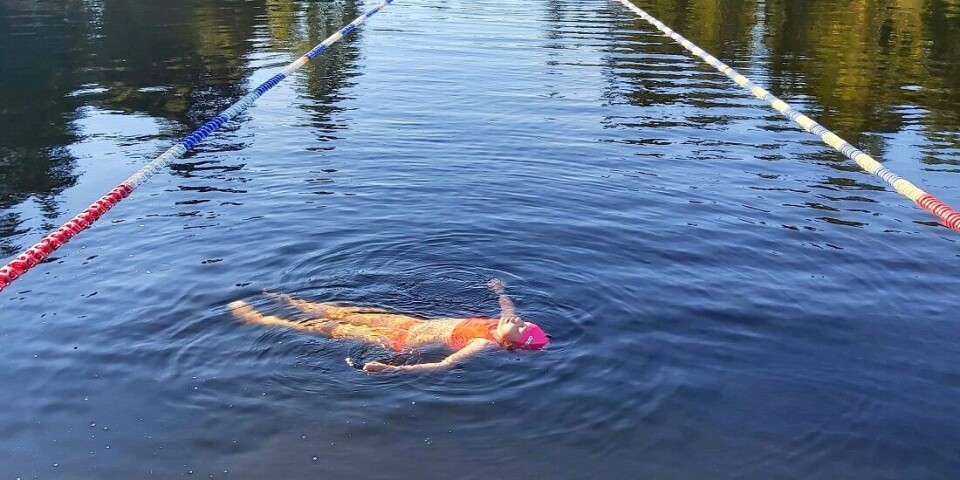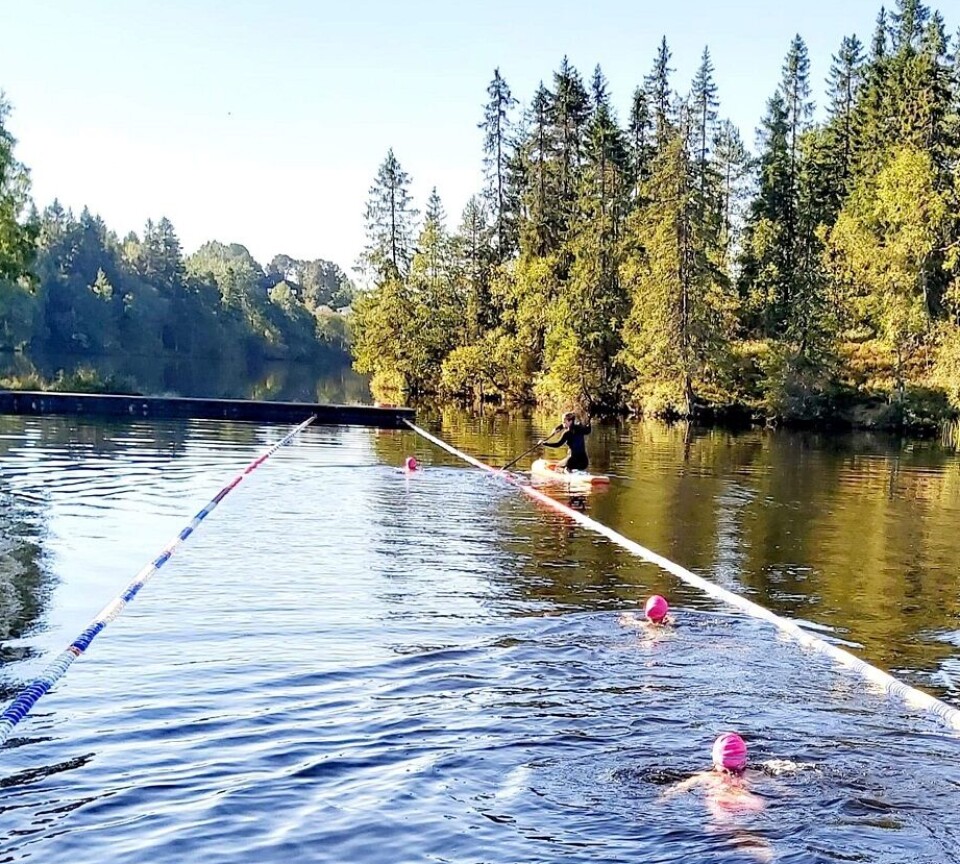THIS CONTENT IS BROUGHT TO YOU BY NTNU Norwegian University of Science and Technology - read more
Does being a good swimmer mean you are safe in the water?
Many children learn to swim in indoor swimming pools. But is that good enough?

Learning to swim is important, especially in a country like Norway, where many people live near the coast, a river, or a lake. That's why swimming is a part of physical education in primary and lower secondary schools.
But does the swimming instruction children receive actually help when the knowledge and skills are needed the most?
“In Norway, swimming instruction mainly takes place in stable, controlled, and predictable environments, such as heated swimming pools,” says Jon Sundan.
He is an assistant professor at NTNU’s Department of Teacher Education.
It is all well and good that students receive this instruction. They get to practice falling into the water, swimming both on their front and back, floating, basic diving, and getting out of the pool.

But Sundan points out that this is not enough. It's only a starting point to make them safer and more competent in the water.
“Today’s swimming instruction helps pupils acquire basic swimming skills. But does it prepare children sufficiently for the kinds of challenges they might encounter in dynamic and unpredictable water environments, such as lakes, rivers, and the sea, which are instrumental from a drowning prevention perspective?” he asks.
Cold water is not the same as a heated pool
Swimming in a warm indoor pool in your swimming trunks is a completely different experience from falling into a cold fjord, lake, or river – possibly in the dark and with all your clothes on – and having to figure out what to do in this particular situation.
“Most drowning accidents occur in natural environments, where currents, low water temperature, waves, and limited visibility make self-rescue significantly more challenging,” says Monika Haga, professor of physical education and sports at NTNU.
She supervised Sundan during his doctoral work. They recently published an article on the relationship between swimming skills in a pool and in a lake.
Big difference between swimming indoors and outdoors
“When we tested a group of children, noticeably fewer of them were categorised as proficient swimmers in a lake compared to what they were able to do in a pool,” says Sundan.
To assess swimming skills, they used the Swimming Competence Assessment Scale. It is based on the Norwegian standard for swimming proficiency.
“In the pool, approximately eight out of ten pupils had sufficient basic swimming skills, meaning they were proficient swimmers. But outdoors, this was reduced to approximately three out of ten,” says Sundan.
The study provides valuable insight and challenges current practice, according to the researchers.
“We simply have to acknowledge that swimming varies according to the water environment in which it is done," he says.
Sundan suggests that one of the measures to reduce the differences between indoor and outdoor swimming could be to ensure that indoor practice is more representative.
"This means it more closely resembles the conditions in natural aquatic environments. In addition, it's crucial that pupils practice swimming outdoors. This is stipulated in the physical education curriculum, especially at the upper primary and lower secondary levels,” he says.
All students must practice swimming outdoors
Things have changed a little in recent years. More people, including central authorities, have become aware that it is important to practise swimming in more natural environments.
The academic community at NTNU has been a driving force in calling for outdoor swimming and lifesaving education to be made part of the curriculum.
In practice, however, it will be some time before all pupils receive this type of instruction. This is partly because the teachers themselves lack the necessary competence and experience.
“Our results show that we still need to take a more comprehensive approach to swimming instruction. In addition to the skills aspect, it must also include knowledge about and attitudes towards being in, near, and on water," says Sundan.
Their research also shows that children cannot just learn to swim in a pool. They also have to be better equipped to handle the complex challenges they may face in various outdoor water environments.
References:
Sundan et al. Development and Content Validation of the Swimming Competence Assessment Scale (SCAS): A Modified Delphi Study, Perceptual and Motor Skills, vol. 130, 2023. DOI: 10.1177/0031512523117740
Sundan et al. Environmental constraints: a comparative analysis of children’s swimming competence in different aquatic environments, Physical Education and Sport Pedagogy, 2025. DOI: 0.1080/17408989.2025.2512754
———
Read the Norwegian version of this article on forskning.no
More content from NTNU:
-
Can we tap the ocean’s power to capture carbon?
-
Researchers have uncovered major problems in Norway's salmon industry
-
Why ChatGPT is bad at imitating people
-
Outer space has a trash problem, according to researchers
-
These researchers want quantum computers that work properly
-
If you can hear your neighbour snoring, there’s something wrong with the building you live in





































